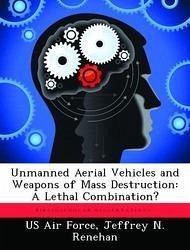
Evaluating the U.S. Military's Development of Strategic and Operational Doctrine for Non-Lethal Weapons in a Complex Security Environment
Versandkostenfrei!
Versandfertig in über 4 Wochen
52,99 €
inkl. MwSt.
Weitere Ausgaben:

PAYBACK Punkte
26 °P sammeln!
The end of the Cold War gave rise to a complex security environment resulting in a fundamental shift of focus from unrestricted warfare against a well-defined enemy towards a wide variety of military operations other than war (MOOTW) characterized by urbanized terrain, joint expeditions, non-state actors, and asymmetric threats. However, it is in exactly this kind of complex environment that non-lethal weapons (NLWs) can make major contributions by enabling more effective political-military strategies, and potentially changing the nature of war itself. To date, no joint doctrinal guidance on N...
The end of the Cold War gave rise to a complex security environment resulting in a fundamental shift of focus from unrestricted warfare against a well-defined enemy towards a wide variety of military operations other than war (MOOTW) characterized by urbanized terrain, joint expeditions, non-state actors, and asymmetric threats. However, it is in exactly this kind of complex environment that non-lethal weapons (NLWs) can make major contributions by enabling more effective political-military strategies, and potentially changing the nature of war itself. To date, no joint doctrinal guidance on NLWs has been published. As a result of a lack of NLWs doctrine, there is an increased risk that NLWs supporting activities develop inefficiently, haphazardly, and possibly ineffectively. Thus, the central question is whether service publications or doctrine, training, leader development, organization, materiel, and soldier support (DTLOMS) exist which provide the US Government's or services' policies and goals of its application of NLWs in a complex security environment? Four major areas are analyzed: military doctrine's role in shaping future technologies, the purpose of joint doctrine, the dynamics of MOOTW and peace support operations (PSOs), and finally, services as well as joint implementation and exploration of NLWs doctrine.














